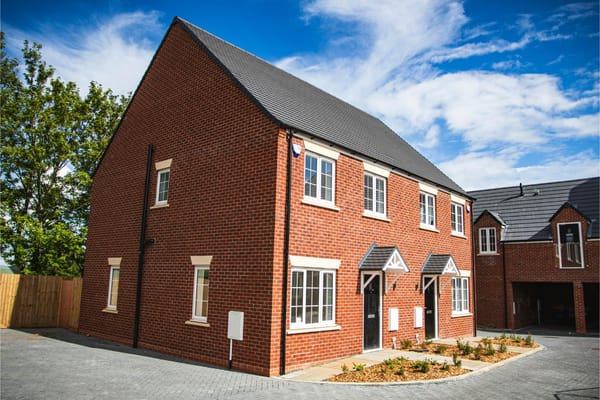Prime London Market Hit by Non-Dom Exodus as Inheritance Tax Reform Looms

The top end of the London property market — once buoyed by international capital and non-domiciled buyers — is undergoing a sharp slowdown. New figures reveal that prime London sales fell by 35.8% in May, with lettings activity also dropping significantly. The decline coincides with a tightening political narrative around inheritance tax (IHT) reform and the phasing out of non-dom tax status, expected under a future Labour government.
At a time when global wealth mobility is rising, the UK’s high-end market — particularly in postcodes like W1, SW1, and NW8 — is showing signs of stagnation. Combined with shifting global tax havens and lifestyle migrations, the result is a rare pause in what was once a near bulletproof segment of the UK property landscape.
The Inheritance Tax Shift: What’s Changed?
Traditionally, non-doms (non-UK domiciled individuals) had significant tax advantages when buying or passing on UK assets — particularly London real estate. However, recent announcements have shaken investor confidence.
Key reforms include:
- Abolition of long-term non-dom status under Labour’s fiscal proposals
- Application of 40% inheritance tax on UK real estate, regardless of domicile
- Potential retroactive tax exposure on trusts and holding structures
- Growing scrutiny of offshore vehicles used to buy London homes
Although these changes are not yet fully legislated, their expected implementation has already sent a clear signal to high-net-worth individuals: UK property may no longer be tax-efficient.
Prime Market Performance: Sales and Lettings Slump
According to recent market data:
- Sales transactions in prime central London fell 35.8% in May
- Lettings activity was down 21.7% year-on-year, with a drop in international corporate relocations
- Average rents rose just 3.3%, despite annualised rent inflation previously peaking above 15%
- Prime London rents remain 32.9% above 2017–2019 averages, suggesting limited further upside
The sharp drop in buyer activity indicates a lack of urgency among affluent international investors. With inheritance tax house value thresholds now front of mind, many are choosing to pause or reallocate capital to jurisdictions with more favourable estate planning rules.
Who Is Leaving — and Where Are They Going?
Tax planning firms and wealth managers report that many non-doms are relocating or restructuring assets. Popular alternatives include:
- Italy’s flat tax regime, offering €100k annual tax on worldwide income
- The UAE, with 0% personal tax and growing luxury property stock
- Singapore and Monaco, both long-time destinations for global high-net-worth individuals
- Portugal (though recent tax benefits for expats have been reduced)
While these destinations appeal to traditional non-dom profiles, London is still seeing new entrants — especially from the United States. There’s growing anecdotal evidence of Americans moving to London, driven by cultural affinity, international schooling, and business ties.
Demographic Shift: The Rise of the 'Global Professional'
One major evolution in the prime buyer profile is the rise of younger, global professionals who are not motivated solely by tax mitigation. Many are entrepreneurs, fintech executives, or creatives relocating for business or lifestyle.
These buyers may still purchase £2–£5 million homes, but they tend to live in the property, hold for shorter cycles, and are more sensitive to macro trends like currency rates, political stability, and mortgage affordability.
As such, while the classic “non-dom investor” base may shrink, a new, more diversified audience is emerging — albeit with different expectations and risk profiles.
Market Implications: Short-Term Pain, Long-Term Recalibration
The withdrawal of the non-dom buyer class is expected to create more inventory at the top of the market, potentially placing downward pressure on prices. Already, agents are reporting:
- Longer average days on market for properties priced above £3 million
- Increased negotiation margins, particularly for second-hand stock
- A shift toward family homes in outer-prime areas like Hampstead, Richmond, and Dulwich, where inheritance tax fears are less acute
Developers targeting ultra-prime segments may need to reprice or rebrand schemes to attract local professionals or international buyers seeking permanent residence — rather than lock-up-and-leave investments.
Investor Strategy: What to Do Next
For high-net-worth investors, property companies, and wealth managers, this market reset brings both risk and opportunity.
- Review ownership structures: UK assets held via offshore trusts or companies may face new scrutiny. Updating legal advice and restructuring may reduce tax exposure.
- Focus on liquidity and value-add: Properties with scope for refurbishment or value engineering (e.g. lease extensions, planning gains) may perform better than trophy assets.
- Diversify geographically: With prime central stagnating, areas like Brent Cross Town, Notting Hill, and Wimbledon offer lifestyle appeal with room for growth.
- Consider alternate tenant profiles: With corporate lets down, longer-term private rentals may offer stability — particularly in family-friendly locations near international schools.
- Monitor political developments: If Labour takes power, detailed legislation will follow. Early movers will benefit from pre-emptive adjustments to their portfolios.
Could This Trigger a Wider UK House Price Shift?
While prime London is its own micro-market, it often serves as a sentiment bellwether for wider UK residential trends. If confidence returns, prime can lift quickly. But sustained policy headwinds could slow recovery — and even ripple into outer prime and commuter belt markets where many international buyers hold secondary assets.
Still, the broader UK residential market remains relatively healthy, with modest house price growth in regions like the Midlands and South West. This divergence could widen the affordability gap, encouraging capital to flow toward better-yielding or less regulated segments.
Outlook: What Lies Ahead for the Prime Market?
The coming months will be pivotal. Should Labour confirm IHT changes and formalise the removal of non-dom privileges, the current buyer pause could turn into a more systemic exit of capital.
Alternatively, a softened or phased policy could allow London to retain its status as a global property hub with adjusted price points.
What’s clear is that the prime market is entering a new chapter — one shaped less by tax arbitrage and more by liveability, transparency, and economic fundamentals. Investors who adapt to this new environment — rather than cling to past assumptions — are most likely to succeed.
Conclusion
The era of unchecked non-dom investment in London’s prime property market may be ending. In its place, a more complex, regulated, and diversified landscape is emerging — one that demands better strategy, smarter ownership structures, and clearer alignment with end-user needs.
While uncertainty remains, opportunity persists — for those who move quickly, act prudently, and build for a new kind of buyer.





